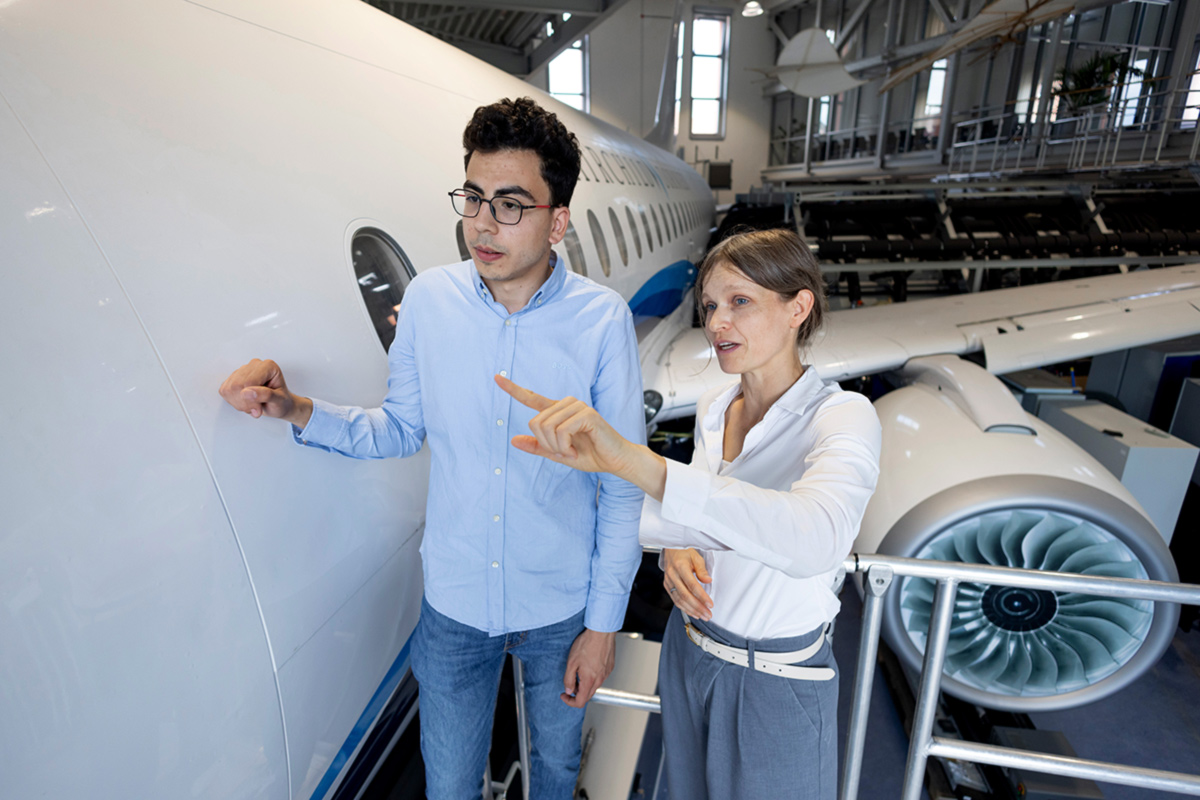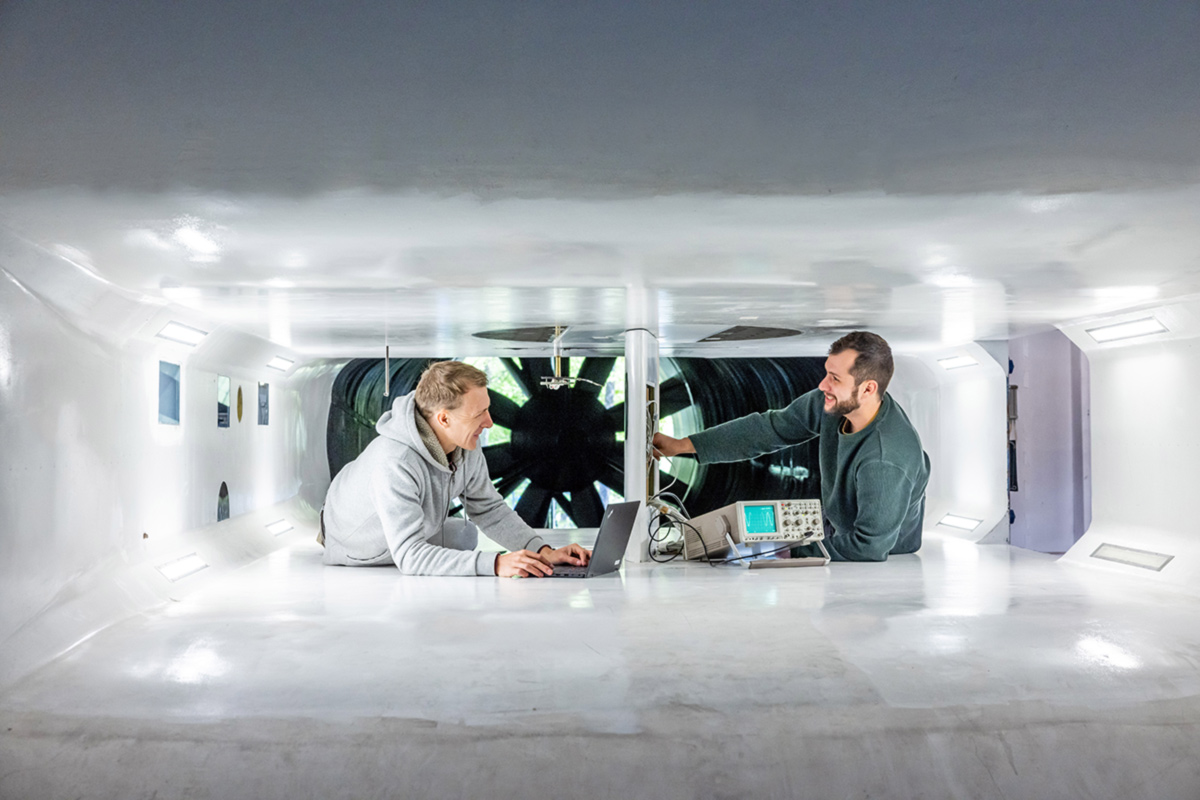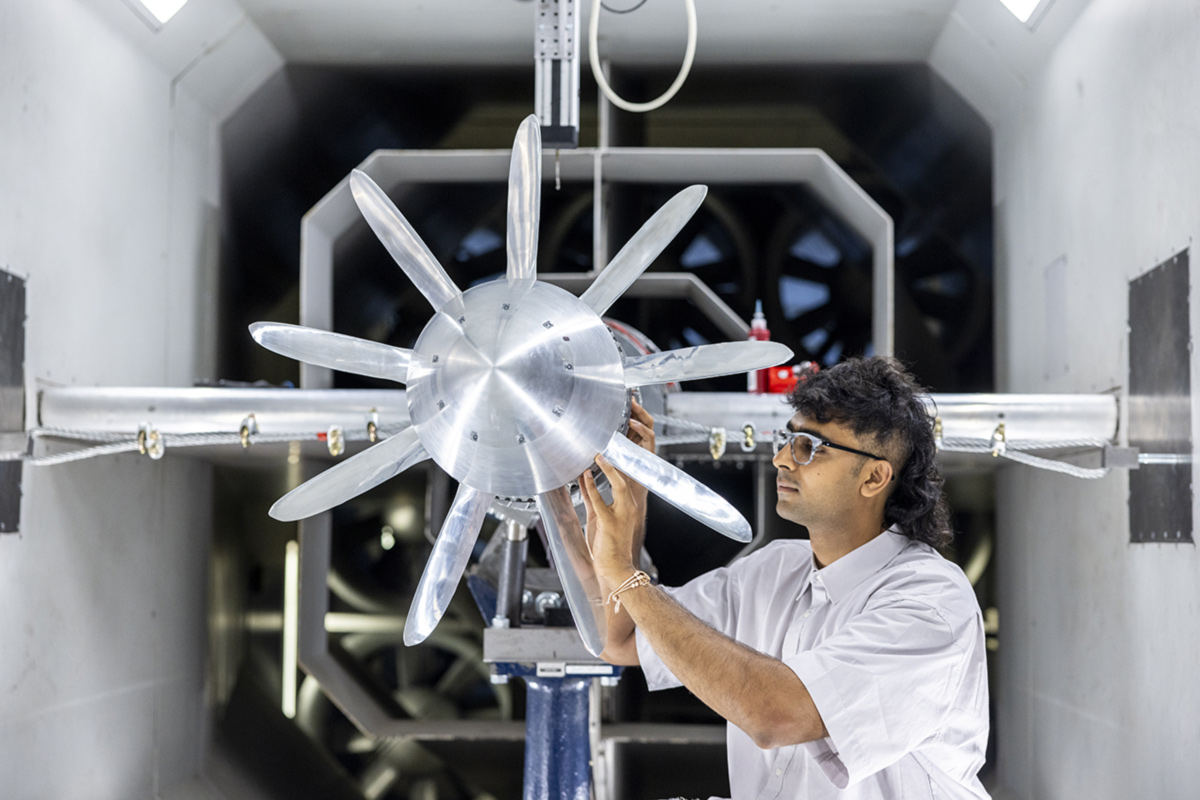B04: Integrated flow simulation for thrust vectoring propulsion systems
Project B04 will analyse new aero-thermodynamic effects of engines with low specific thrust and pressure ratio having their exhaust systems operated on the steep side of the flow and thrust characteristics. This covers non-uniform flow conditions within the intake system and the exhaust system. Special attention is paid to the impact on fan aerodynamics and performance. Transient performance modelling will be extended to embrace waste heat recovery and water recovering exhaust gas treatment as well as mild thrust vectoring. The model will also provide an interface to the power balance method as thus couple detailed aero-thermodynamic results with reduced order models within SynTrac.
Motivation
Integration of the propulsion systems into the aft-fuselage provides the opportunity to realize synergies in design and operation but couples the engine internal flow strongly to the flow of the empennage.
- Boundary Layer Ingestion as a candidate for power savings needs full understanding of its related fan penalties for design and off-design conditions.
- Mild thrust vectoring capability allows the combination of thrust generation and aircraft control while reducing the wetted area and drag.
- Waste heat recovery and other types of exhaust gas treatment impact the flow path design and the integration of the propulsor into the empenage.
- The strong aerodynamic couplings between the components have to be integrated in future engine performance models.
Objective
- Definition of Reduced-Order-Models (ROM) describing the additional interaction effects of highly integrated but low specific thrust propulsion systems.
- Development of a new thermo-aerodynamic performance model for integrated propulsion with BLI and exhaust gas treatment.
- Integrated, high fidelity simulation of the non-uniform flow in the intake, the fan, the bypass duct and the exhaust system.
- Detailed design of a variable area nozzle with mild thrust vectoring capabilities.
Approach
The initial phase focuses on the thermo-aerodynamic design and sizing of the baseline engine and fan, tailored for the 180° BLI reference engine. This is followed by an aerodynamic analysis of fan intake distortion induced by BLI using RANS simulations. Subsequently, the interaction between the non-symmetric exhaust and fan, alongside non-uniform fuselage back pressure is investigated. To mitigate losses associated with BLI, optimization studies are conducted to design a distortion-tolerant fan, utilizing a modified radial rotor load distribution derived from previous calculations. Simultaneously, the working cycle and the modeling concept in terms of waste heat recovery and exhaust gas treatment would be considered. Then the detailed design of propulsor, optimum design space for water recovering exhaust gas treatment as well as two mild thrust vectoring exhaust system designs will be determined. This is closely followed by the fluid mechanics analysis of mild thrust vectoring systems with variable area. In the final step, an extended, thermodynamically consistent performance modeling reflecting non-linear interactions of the propulsion system will be carried out.
Role in SynTrac
- Definition of initial engine and fan performance and dimensions for projects A01, A02, A03, A06, B01, B06 and B03.
- Characterization and assessment of BLI inlet with C03.
- Fan-exhaust interaction results provided to B01 and B06.
- Estimation of dimension and design space for exhaust gas treatment components with C02 and B06.
- Providing mild thrust vectoring exhaust system designs to B03 and B06.
- Analysing mild thrust vectoring systems with extended power balance method provided by A02.
- Providing gross thrust to project A05.














